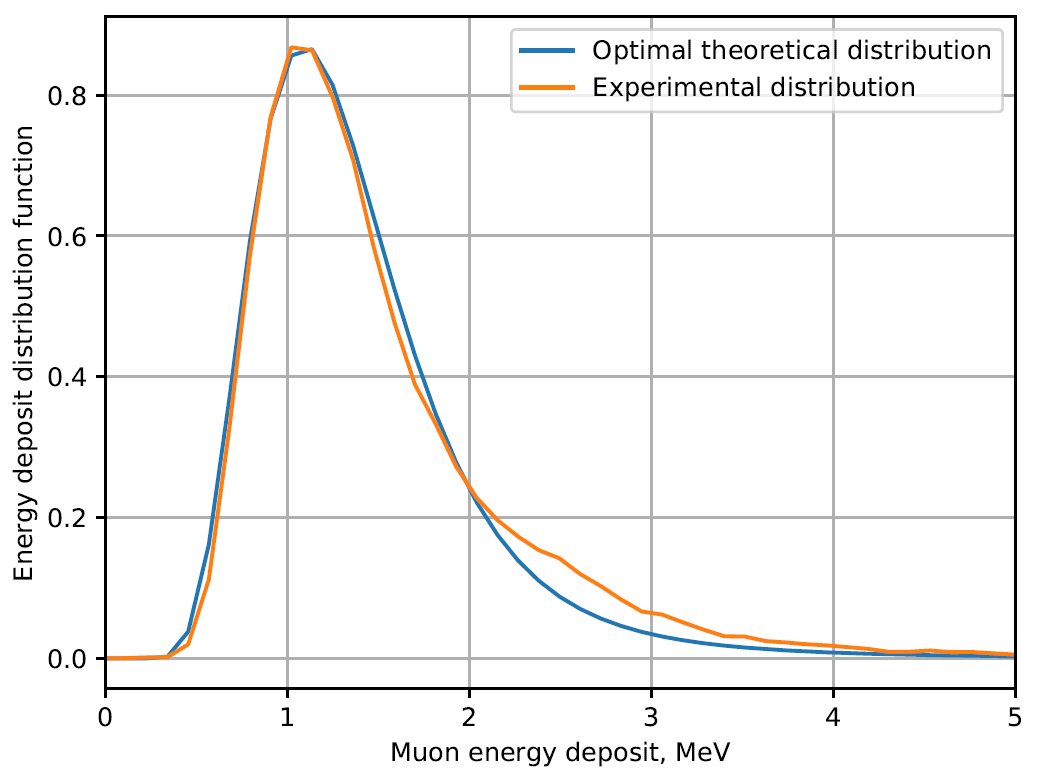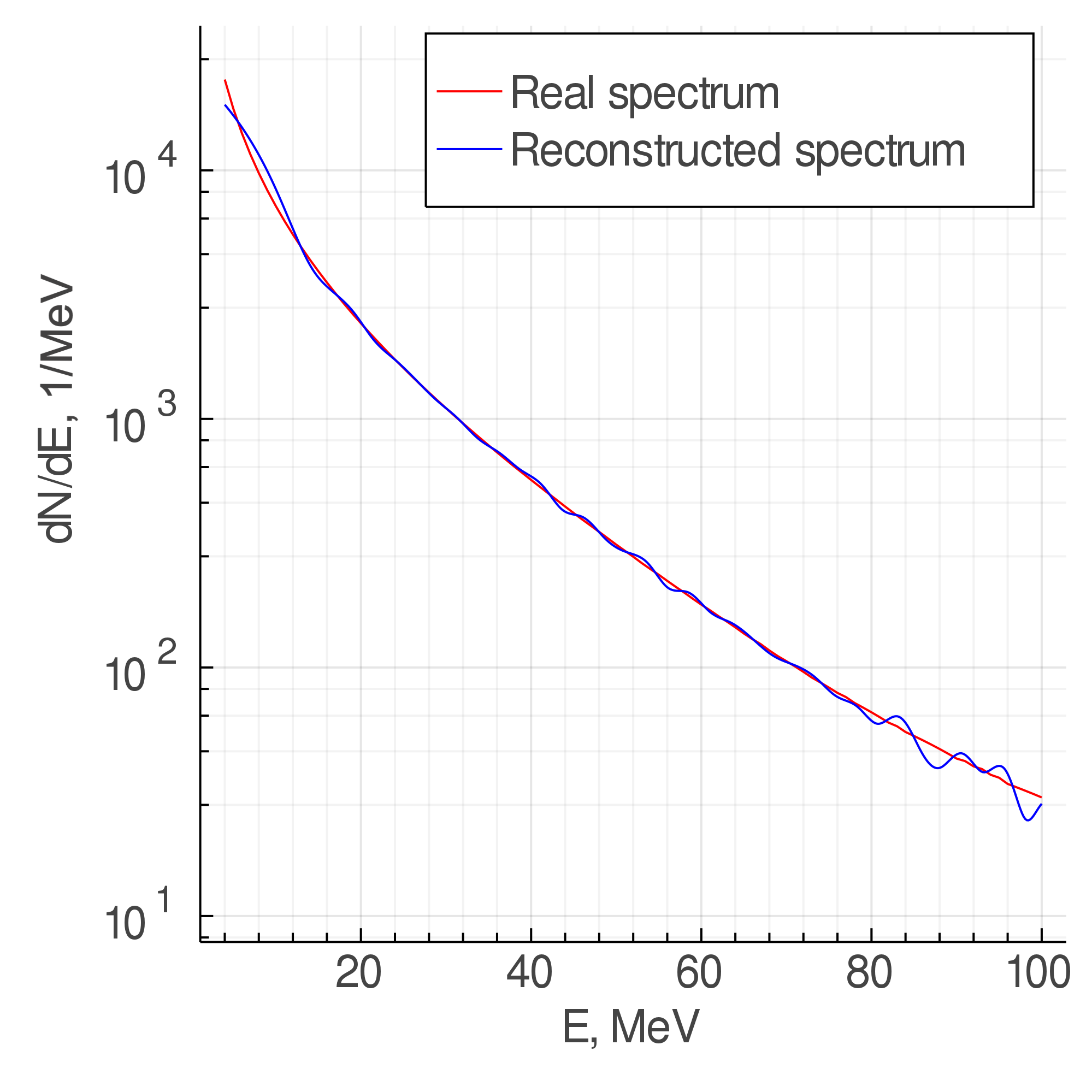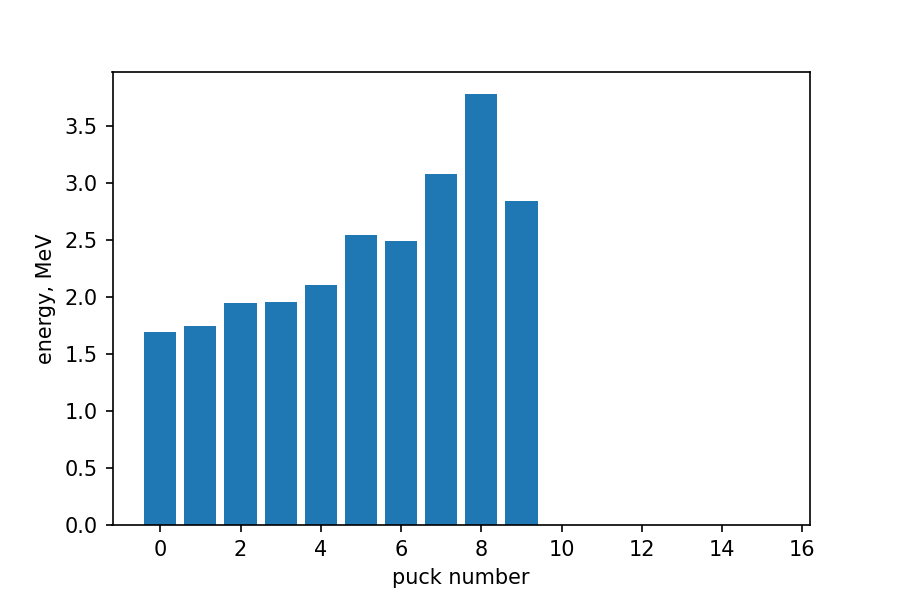...
This distribution was convoluted with Gaussian distribution, which characterizes the channel error. Experimental muon data were fitted with the convolution and the calibration with channel errors were obtained:
This new calibration method allows one to calibrate the detector channels via all muons registered, not only vertical muons.
Integral mode
When registered particles flux is higher than the detector count rate an integral mode is to be used. In this mode, the integral loss curve for all particles, detected within exposition time, is analyzed via the Turchin regularization method. This method was successfully implemented and tested by data obtained with Geant4 simulations.
With the integral mode, the detector is potentially able to measure high fluxes of solar energetic particles.
Accelerator experiment
The detector was tested at the proton accelerator of the INR RAS. The stand for this experiment was assembled. This stand consisted of several parts: the detector prototype, a collimator, a moveable mechanism for moving the detector under the beam.
...
Protons with kinetic energy 74 MeV were successfully detected. The energy deposit distribution was obtained. This distribution possesses a Bragg peak, which corresponds to 74 MeV protons. In the figure below, each channel is equal to 4 mm of polystyrene.


